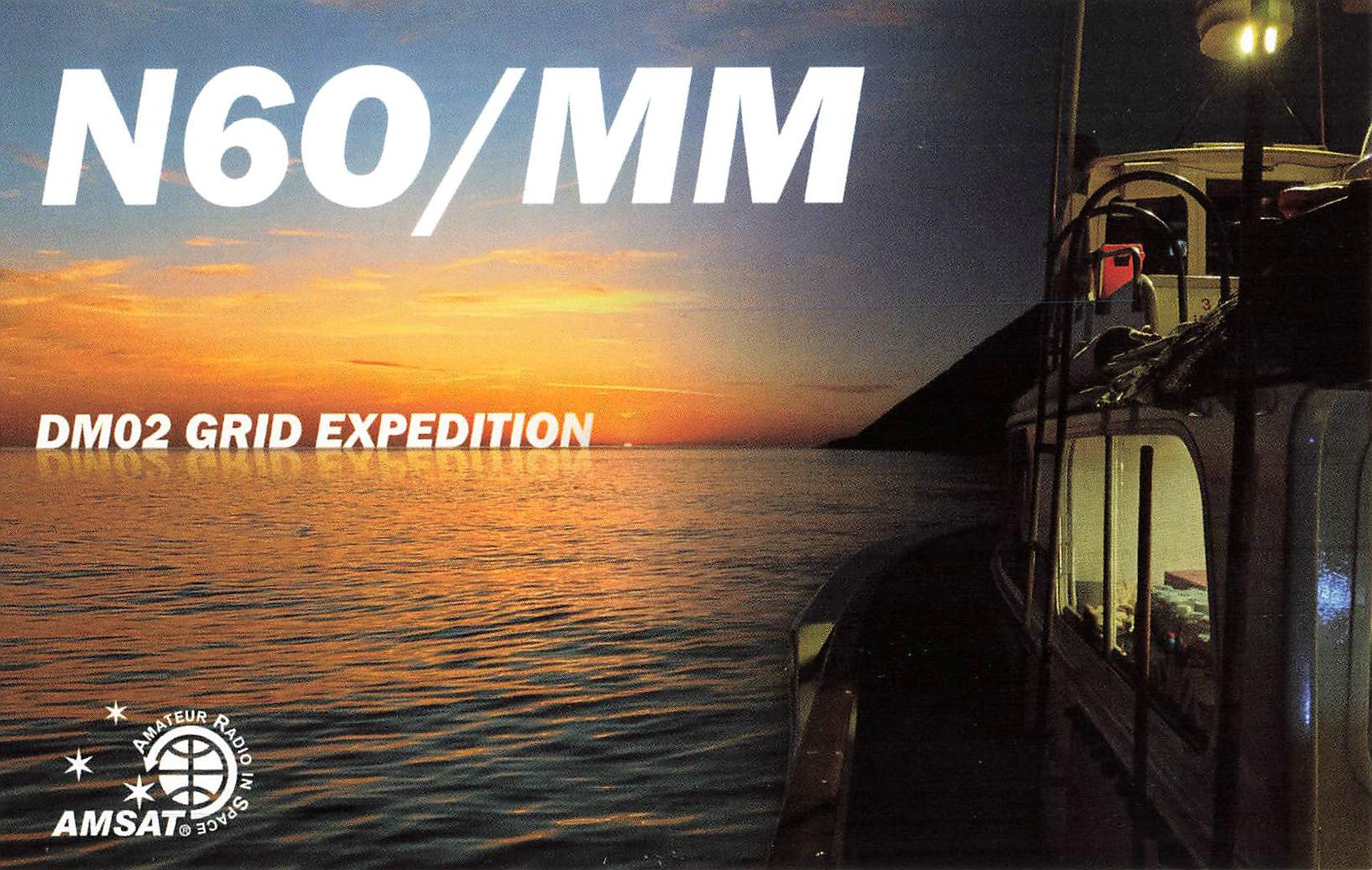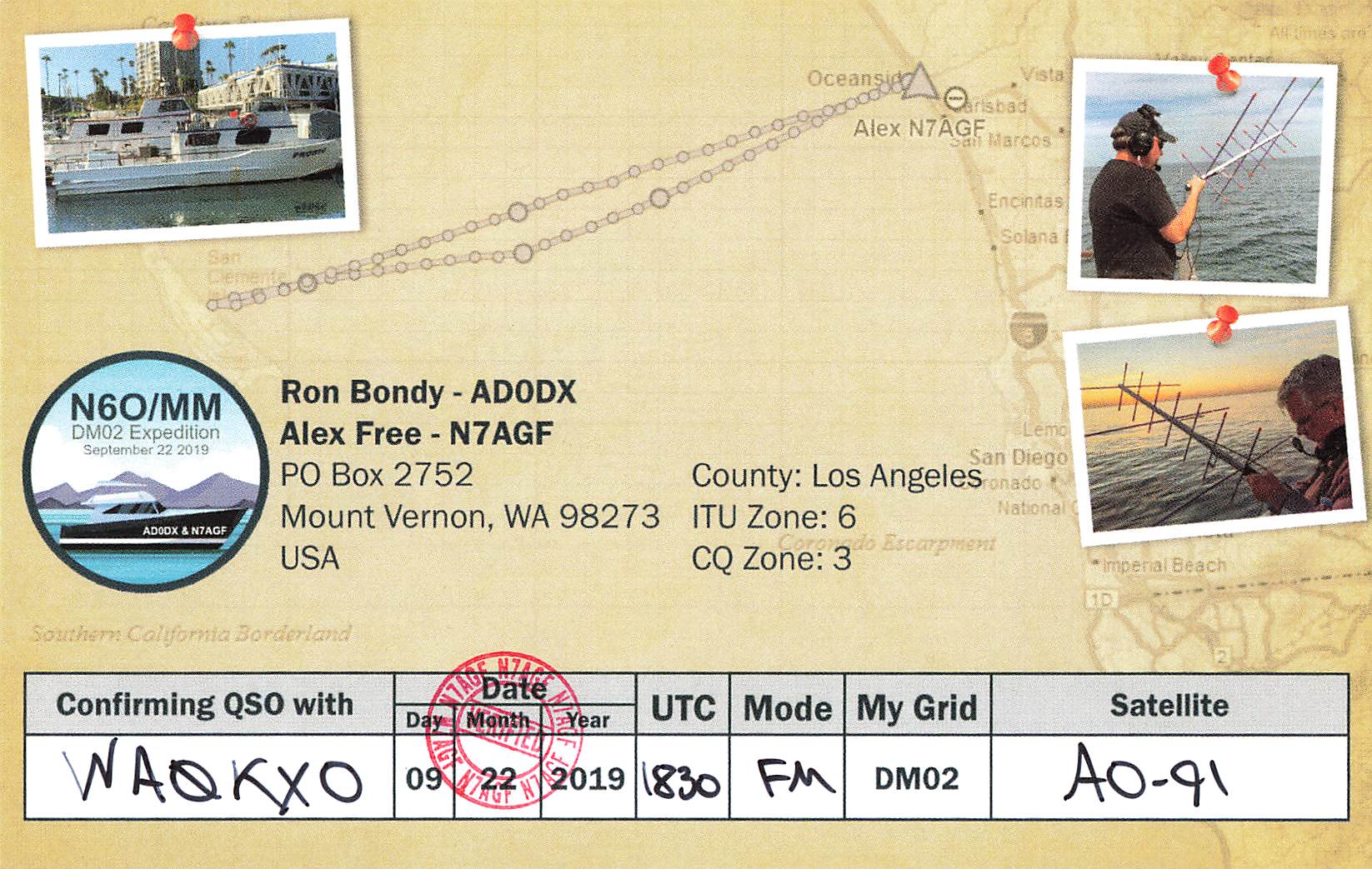Working my First AMSAT Contact (N6O/MM)⚓︎
September 22, 2019
AMSAT⚓︎
I’ve been researching how to make AMSAT contacts for a few months now. The idea of making a contacting using 70cm/2m and having the repeater on a satellite is just, cool.
It was clear this wasn’t going to be easy though. I’m not great at repeating phonetics quickly, AMSAT contacts are very quick, and with my equipment there was going to be a fair amount of things to manually maintain.
Equipment⚓︎
I don’t have the best setup for AMSAT, but you use what you have.
- Kenwood TM-721
- Elk Antennas 2M/440L5 Dual-Band Antenna
- 8Ah SLA battery
- Heavens-Above
Practicing⚓︎
There is a lot of advice that before you start making AMSAT contacts you really should listen to a few passes, get a feel for the contact speed, make sure you can track the satellite, and get use to changing your TX frequency to account for Doppler. This is partially so that you get the practice, but the FM birds are very busy, the window for making a contact is just a few minutes, and you don’t want to be transmitting interference to others on the bird while you are fumbling around. Getting some practice in seemed like sound advice.
After reviewing Working the Easy Sats I decided that AO-91 was going to be my best option.
I started going out to the field behind our house for 5-6 passes of AO-91, and a few other sats, and just practiced the whole process without transmitting. If you reviewed my equipment list, you might have noted that I’m hulling 9 pounds with the radio and battery alone, plus a tripod. The tripod has a hammock between the legs to hold the battery and radio, with a mount for my phone on the camera mount so I can easily see the pass on Heavens-Above.
It became clear the changing of frequency for Doppler with the TM-721 being so low to the ground was going to be an issue, but for now this will have to work.
First Attempts⚓︎
Get out early, get the phone ready, verify the frequencies are all set, prepare to shift frequencies to account for Doppler, aim the antenna at the horizon, and here we go.
Three passes later and I have yet to hear my own audio on the downlink. Clearly the Doppler and aiming of the antenna is tripping me up.
First Contact⚓︎
Attempt number 4, and this time as soon as I catch the audio I hear a pileup on a 1x1 /MM (maritime mobile), which is nice since everyone keeps stating the call so I don’t have to get myself tripped up there. I call out, and just barely hear my own audio on the downlink for a split second. N6O makes a QSO with someone else, calls out QRZ, and I try again. Solid audio, so much so it threw me off and I stumbled on the rest of the contact. I get out a quick reference it was my first AMSAT and I get a quick congrats from N6O and he is off working the rest of the pileup.
QSO complete and I couldn’t be more excited. The passes are quick, QSOs even quicker, and while the AMSAT community is friendly to newcomers they too have a short period of time to make a QSO so they appreciate it when you don’t ragchew or waste their time.
Post-Contact⚓︎
I went to Twitter, which I so rarely do, and posted that I made the contact, and had some great replies from the AMSAT community. This is one of the things I like so much about amateur radio, even with what Twitter has become, the radio community is helpful, polite, and encouraging. N6O/MM was in DM02, a rare gridsquare for AMSAT, how cool!
What a great first experience for AMSAT! I hope to make more contacts via the birds, but I will say the speed and fast memorization of a call will continue to be an issue for me.
Anyways, you have to send a card on your first contact, and I wasn’t disappointed with what I got back from N6O/MM.
N6O/MM QSO Card⚓︎





